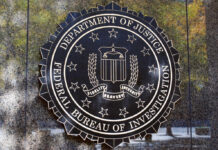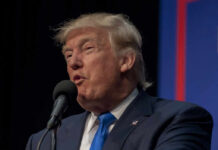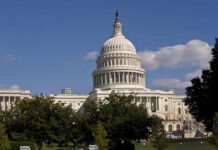
Last weekend, an audacious encounter over Syrian skies underscored the heightening tension between U.S. and Russian forces. A Russian fighter jet allegedly damaged a U.S. drone’s propeller, making an unequivocal statement of aggression.
According to U.S. military officials, the incident occurred on July 23, when a Russian aircraft flew perilously close to a U.S. MQ-9 Reaper surveillance drone on a defeat-ISIS mission, discharging flares that damaged the drone’s propeller. This act was more than just a brazen show of audacity; it could have hampered counter-terrorism operations in Syria.
Russia Damages US Drone Over Syria @DailyCaller @micaela_burrow https://t.co/TVFLs7qHNc
— Dylan Housman (@Dylan_Housman) July 25, 2023
Lt. Gen. Alex Grynkewich, the commander of U.S. Air Forces Central, affirmed in a statement, “One of the Russian flares struck the U.S. MQ-9, severely damaging its propeller.” Despite the critical damage, the crew members operating the drone remotely managed to bring the aircraft back to its base, indicating the preparedness and professionalism of our forces.
But this incident was far from isolated. In recent months, encounters with Russian forces in Syria have escalated, with Russian jets harassing U.S. drones three times in as many days earlier this month. The Russians blamed targeting signals from American drones for setting off automatic alarms, alleging U.S. interference with joint Russian-Syrian military exercises. However, this does not exonerate their hazardous actions.
Russian jets had come dangerously close to U.S. drones twice in 24 hours a few days prior. They deployed flares near our aircraft and maneuvered aggressively, prompting evasive responses from our pilots. Lt. Gen. Grynkewich emphasized, “These events represent another example of unprofessional and unsafe actions by Russian air forces operating in Syria.”
Such irresponsible antics pose a risk to U.S. military personnel and disrupt the focus on the paramount goal – the enduring defeat of ISIS. Therefore, Russian actions are threats to American forces and global security at large.
The U.S. response has been measured and unequivocal in the face of such provocation. Our military officials have called on Russian forces in Syria to cease their reckless behavior and to adhere to the professional conduct expected of any air force. The U.S. remains committed to ensuring the safety and security of its personnel and assets. It continues to work with its allies to prevent any escalation of regional tensions.
However, the administration must address this growing issue firmly. It’s paramount to ensure that these escalating tensions do not morph into a more significant, destructive conflict. Our primary goal remains the defeat of ISIS. Still, we cannot disregard the audacious maneuvers of Russia in the Syrian skies. The situation calls for strategic and decisive action that reassures the nation and deters such acts in the future.
The U.S. maintains a force of approximately 900 troops in Syria, primarily working with the Kurdish-led Syrian Democratic Forces against ISIS. It is the duty of our administration to ensure the safety of these troops, drones, and the broader mission. Their success relies heavily on the responsible conduct of all forces operating in the region.




























